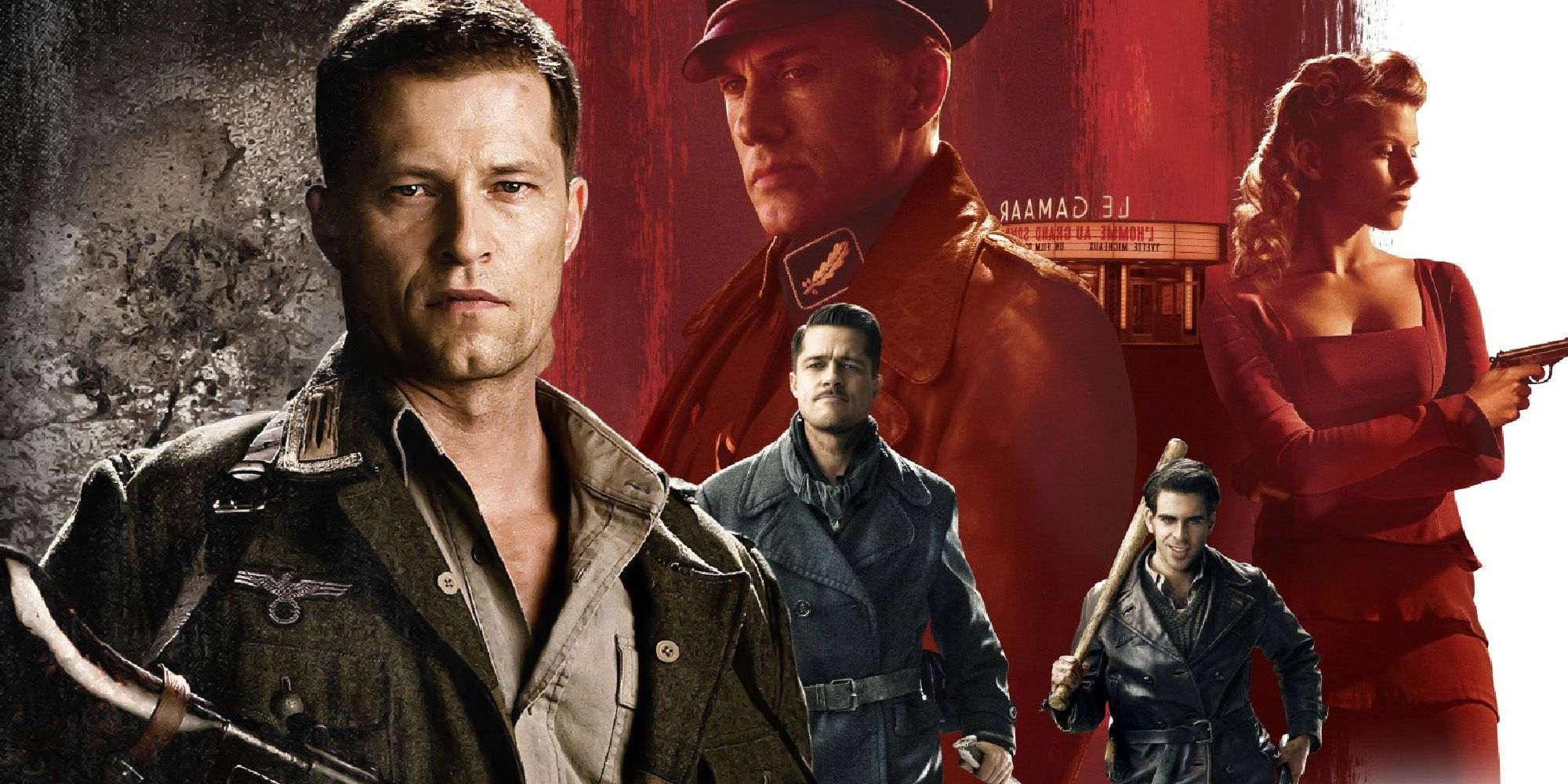Inglourious Basterds introduced some very dangerous characters, both Nazis and anti-Nazi, and among those was Hugo Stiglitz, who was a “celebrity” due to his violent actions, yet no German soldier recognized him. Quentin Tarantino’s career as a filmmaker began in 1992 with the crime movie Reservoir Dogs, which introduced the audience to his narrative and visual style, but his big break came two years later with Pulp Fiction. Since then, Tarantino has explored different genres (such as martial arts with Kill Bill and exploitation with Death Proof), all with his signature style.
In 2009, he decided to tell an alternate version of history in Inglourious Basterds, a style he later repeated in Once Upon a time in Hollywood. Set during World War II, Inglourious Basterds followed two subplots with the common goal of killing as many Nazis as possible, including Hitler – one plan was by a group known as the “Basterds”, led by Aldo Raine (Brad Pitt), and the other by Shosanna Dreyfus/Emmanuelle Mimieux (Mélanie Laurent), a Jewish cinema owner whose family was killed by SS officer Hans Landa (Christoph Waltz). Among the group of the Basterds was Hugo Stiglitz (Til Schweiger), a former German army soldier who murdered various officers.
Inglourious Basterds took some time to tell a bit of Stiglitz’s backstory (with Samuel L. Jackson as narrator), explaining that as an enlisted German soldier, he killed thirteen Gestapo officers – and because this is a Tarantino movie, two of those murders were shown on screen. Instead of being killed, Stiglitz was sent back to Berlin to serve as “an example”, but he never made it there as the Basterds heard about him, and they made it to his cell to offer him a place in their Nazi-killing group. This whole explanation happens as the Basterds attack a squad of German soldiers and Aldo Raine tells one of them that he might be familiar with Stiglitz. The soldier replies that “everyone in the German army has heard of Hugo Stiglitz”, and that raised the question of why he wasn’t recognized by anyone for the rest of the movie.
Although Stiglitz doesn’t have a major role in Inglourious Basterds and thus doesn’t appear much, he was part of Operation Kino and met Bridget von Hammersmark (Diane Kruger) at a basement tavern alongside Lt. Archie Hicox (Michael Fassbender) and Wilhelm Wicki (Gedeon Burkhard). Things didn’t go as planned as the tavern was full of German soldiers who were celebrating that one of them had just become a father and the group ended up being joined by Major Dieter Hellström (August Diehl), who eventually realized they weren’t real German soldiers, resulting in a major gunfight where only von Hammersmark survived. If Stiglitz was such a “celebrity” and his face was all over the newspapers, at least one person should have recognized him at the tavern, but that wasn’t the case. Some believe Hellström did from the very beginning, but he played along to see if they blew their cover.
Others believe that Stiglitz was famous not because his face was on the newspapers but because the stories of his actions traveled word-of-mouth throughout the ranks of the German army, but they didn’t know exactly what he looked like. Stiglitz could have become a sort of legend among soldiers, of which many might have also been convinced he was imprisoned in Berlin (surely, they wouldn’t have wanted everyone to know that the Basterds killed the officers guarding Stiglitz’s cell and took him with them). Besides, and with the exception of Hellström, all soldiers in the tavern were drunk and focused on their own activities, and weren’t paying much or any attention to Stiglitz and company. Of course, a man like Hans Landa would have recognized him instantly, and he did when he went to the tavern and saw his corpse on the floor. If Hugo Stiglitz not being recognized by other German soldiers in Inglourious Basterds is a plot hole or not will depend on the viewer and their own interpretation of Stiglitz’s situation, and there are good arguments for both sides.


